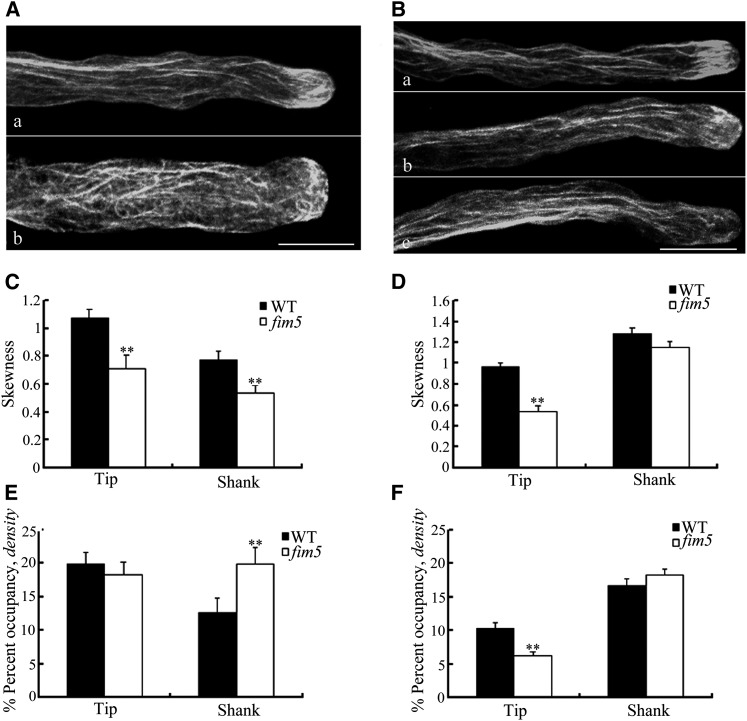Figure 5.
F-Actin Distribution in Pollen Tubes of Wild-Type Arabidopsis and fim5 Mutants.
(A) Actin organization was disturbed in fim5 mutants in the early stage (growing time ≤6 h), and actin cables protruded into the extreme tips. (a) The wild type; (b) fim5. Bar = 10 µm.
(B) The actin fringe structure was prominent in pollen tubes of the wild type (a), whereas this structure was not discernable in fim5 mutants (b and c) at the late stage (the culturing time was 12 h). Bar = 10 µm.
(C) and (D) Quantitative analysis of the extent of actin bundling in the tip and shank areas at the early stage (C) and the late stage (D) based on skewness. Pollen tubes of fim5 mutants had significantly decreased average skewness values in both tip and shank areas (**P < 0.01, by t test, n ≥ 20 per group) (C). Pollen tubes of fim5 mutants had significantly decreased average skewness values in the tip area (**P < 0.01, by t test, n ≥ 40 per group), and there was no significant difference in the shank area (P > 0.05, by t test, n ≥ 28 per group) (D). Error bars represent mean ± se. WT, the wild type.
(E) and (F) Quantitative analysis of actin density in the tip and shank areas at the early stage (E) and the late stage (F). Pollen tubes of fim5 mutants had significantly increased average occupancy values in the shank area (*P < 0.01, by t test, n ≥ 20 per group), and there was no significant difference in tip area (P > 0.05, by t test, n ≥ 20 per group) (E). Pollen tubes of fim5 mutants had significantly decreased average occupancy values in the tip area (**P < 0.01, by t test, n ≥ 40 per group), and there was no significant difference in the shank area (P > 0.05, by t test, n ≥ 28 per group) (F). Error bars represent mean ± se.

